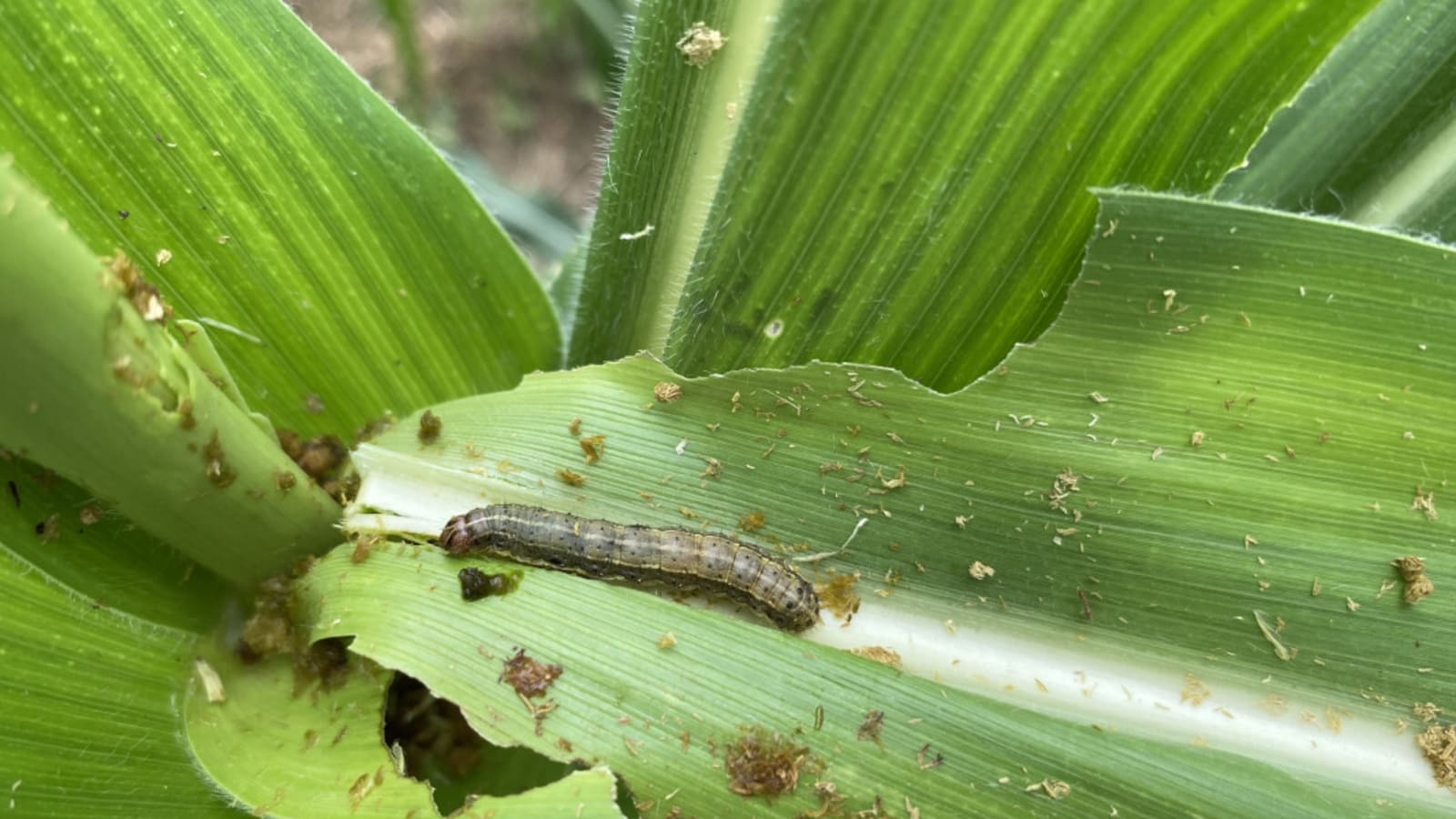
Armyworm caterpillars might sound like a military threat, but they’re actually a type of caterpillar that can wreak havoc on athletic fields, turf grasses, lawns, gardens, and agricultural crops. With a severe infestation, the armyworm species are known for their ability to consume large amounts of vegetation in a short time, so these pests are a problem for homeowners and farmers alike.
Understanding what armyworm caterpillars are, how they live, and the damage caused by heavy populations can help you protect your green spaces and respond effectively.
What Exactly Are Armyworms?
Armyworms are the larval stage of several species of moths, with the fall armyworm (Spodoptera frugiperda) being the most common in the United States. These caterpillars are named for their habit of moving in large groups, resembling an army as the armyworm populations march across fields and lawn grasses in search of food.
They have a distinctive appearance: typically green, brown, or black with stripes running along their bodies. They grow to about 1.5 inches long and have a small, inverted "Y" on their head.
Their life cycle begins when adult moths lay eggs on grass or plants. Once hatched, the larvae feed voraciously for about two to three weeks before burrowing into the soil surface. These mature caterpillars then pupate and emerge as armyworm moths, starting the cycle again.
The Damage Armyworms Can Cause
The destruction caused by armyworms can be severe, especially when infestations go unnoticed. These pests feed on the leaves and stems of plants, stripping away vegetation and leaving behind bare patches. In lawns, armyworms chew grass blades down to the crown, giving it a scalped appearance. If damage is extensive, the grass will need reseeding and other intervention.
Crops like corn, rice, and soybeans are also at risk. Armyworms can consume entire fields if left unchecked. Their rapid reproduction and group-feeding behavior make them particularly challenging to control. Damage tends to spike during warmer month because hot weather accelerates their lifecycle.
To catch an infestation early, look out for these indicators:
- Sudden dead or brown patches in your lawn
- Visible caterpillars feeding on grass or plants
- Clusters of white eggs on blades of grass or leaves
- Increased bird activity (birds may flock to feed on the caterpillars)
- A “cut” appearance in plants where armyworms have chewed through stems and leaf blades
FAQ
How do I get rid of armyworms?
Effective control involves a combination of methods:
- Natural enemies of armyworms and beneficial insects can help reduce their numbers. Some natural enemies may be birds, skunks, ground beetles and other insects.
- If you want to use insecticides, look on the insecticide label for active ingredients specifically targeting armyworms and apply them in the stage of development when the armyworm larva are small for the best results.
- Regular mowing and removing debris like leaf litter from your lawn and soil surface can make it less inviting for female moths to lay eggs.
Are armyworms a threat year-round?
In most climates, no. Armyworms are most active during the warmer months and may not survive cold winters or cooler temperatures in many regions. However, in warmer climates or during unusually mild winters, they can persist year-round. Migratory moth flight can also bring new armyworm feeding infestations to previously unaffected areas with food sources, so be on the lookout every spring.
Can my lawn recover after an armyworm infestation?
It really depends on the severity of the damage. If the crowns of the grass are still intact, the lawn can regrow with proper care, including watering, fertilizing, and reseeding if necessary. For heavily damaged areas, you may need to lay new sod or overseed to restore the grass.
More must-reads:
- Texas football team reportedly has shockingly high payroll
- Five-star USC commit Alijah Arenas receives positive health update
- The 'Youngest 25/5/5 with five threes in a playoff game by NBA franchise' quiz
Customize Your Newsletter
 +
+
Get the latest news and rumors, customized to your favorite sports and teams. Emailed daily. Always free!








